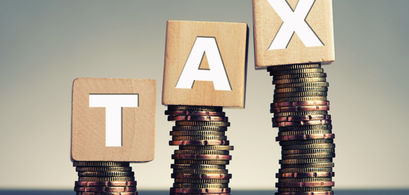Sales tax by state is one of the most important points to consider when evaluating the impact of tax revenue in regions across the US.
While many types of tax, such as income and corporate tax, can be difficult to understand, sales tax can be a little more straightforward, as you’ll see it printed on the receipt for any product or service you buy. Notably, however, the sales tax you pay can vary depending on a number of factors.
Some states in the US have no sales tax, while others have not only a federal sales tax rate but local taxes to consider per city and county too.
Here’s what you need to know about sales tax in the US by state.
Understanding US Sales Tax by State
When it comes to evaluating sales tax rates by state across America, it’s important to note that different regions approach taxes in different ways. Some states don’t charge sales tax at all, while others charge sales tax but no “local sales tax.”
The addition of a local sales tax on top of a state sales tax can significantly increase the price of goods for customers and cause problems for businesses, which is why many entrepreneurs deliberately seek out low-tax states.
When sales taxes by state are increased by local tax, there’s usually a maximum limit on how much tax can be charged in each sale. For instance, Colorado has the highest maximum local tax rate at 8.30%.
Sales Tax Comparison by State
In the table below, you can see the state sales tax rates, the range and averages of local sales taxes, as well as the range and averages of the combined sales tax rates for each one of the 50 states and Washington D.C.
State | State Tax Rate | Average Local State Tax | Average Combined Tax Rate |
Alabama | 4% | 5.237% | 9.237% |
Alaska | 0% | 1.813% | 1.813% |
Arizona | 5.60% | 2.771% | 8.371% |
Arkansas | 6.50% | 2.943% | 9.443% |
California | 7.25% | 1.601% | 8.851% |
Colorado | 2.90% | 4.891% | 7.791% |
Connecticut | 6.35% | 0% | 6.35% |
Delaware | 0% | 0% | 0% |
D.C. | 6% | 0% | 6% |
Florida | 6% | 1.019% | 7.019% |
Georgia | 4% | 3.394% | 7.394% |
Hawaii | 4% | 0.443% | 4.443% |
Idaho | 6% | 0.021% | 6.021% |
Illinois | 6.25% | 2.588% | 8.838% |
Indiana | 7% | 0% | 7% |
Iowa | 6% | 0.934% | 6.934% |
Kansas | 6.50% | 2.250% | 8.750% |
Kentucky | 6% | 0% | 6% |
Louisiana | 4.45% | 5.097% | 9.547% |
Maine | 5.50% | 0.00% | 5.5% |
Maryland | 6.00% | 0.00% | 6% |
Massachusetts | 6.25% | 0.00% | 6.25% |
Michigan | 6.00% | 0.00% | 6% |
Minnesota | 6.875% | 0.648% | 7.523% |
Mississippi | 7.00% | 0.062% | 7.062% |
Missouri | 4.225% | 4.137% | 8.362% |
Montana | 0% | 0% | 0% |
Nebraska | 5.50% | 1.471% | 6.971% |
Nevada | 6.85% | 1.386% | 8.236% |
New Hampshire | 0% | 0% | 0% |
New Jersey | 6.625% | 0.024% | 6.601% |
New Mexico | 4.875% | 2.726% | 7.601% |
New York | 4.00% | 4.532% | 8.532% |
North Carolina | 4.75% | 2.246% | 6.996% |
North Dakota | 5.00% | 2.038% | 7.038% |
Ohio | 5.75% | 1.488% | 7.238% |
Oklahoma | 4.50% | 4.486% | 8.986% |
Oregon | 0% | 0% | 0% |
Pennsylvania | 6% | 0.341% | 6.341% |
Rhode Island | 7% | 0% | 7% |
South Carolina | 6% | 1.499% | 7.499% |
South Dakota | 4.20% | 1.908% | 6.108% |
Tennessee | 7% | 2.548% | 9.548% |
Texas | 6.25% | 1.948% | 8.198% |
Utah | 4.85% | 1.098% | 5.948% |
Vermont | 6.00% | 0.359% | 6.359% |
Virginia | 4.30% | 0.467% | 4.767% |
Washington | 6.50% | 2.897% | 9.397% |
West Virginia | 6.00% | 0.566% | 6.566% |
Wisconsin | 5.00% | 0.429% | 5.429% |
Wyoming | 4.00% | 1.441% | 5.441% |
What State Has the Highest Sales Tax?
California is the state with the highest sales tax of 7.25%. However, when we take local sales taxes into account, the state with the highest sales taxes is Tennessee, with a combined average of 9.548%.
States With the Highest Sales Tax
The table below ranks the top ten states with the highest state sales taxes and the ones with the highest combined sales tax rates, i.e. state sales tax + local sales tax average.
Highest Sales Tax by State
Rank | State | State Tax Rate | Rank | State | Combined Tax Rate average | |
1 | California | 7.25% | 1 | Tennessee | 9.548% | |
2 | Mississippi | 7% | 2 | Louisiana | 9.547% | |
3 | Rhode Island | 7% | 3 | Arkansas | 9.443% | |
4 | Tennessee | 7% | 4 | Washington | 9.397% | |
5 | Minnesota | 6.875% | 5 | Alabama | 9.237% | |
6 | Nevada | 6.85% | 6 | Oklahoma | 8.986% | |
7 | New Jersey | 6.625% | 7 | California | 8.851% | |
8 | Arkansas | 6.5% | 8 | Illinois | 8.838% | |
9 | Kansas | 6.5% | 9 | Kansas | 8.750% | |
10 | Washington | 6.5% | 10 | New York | 8.532% |
What State Has the Lowest Sales Tax?
The data on US sales tax by state reveals that outside the states with no sales taxes, Colorado has the lowest sales taxes in the USA, with a state tax rate of 2.9%.
As for the state with the lowest combined sales taxes, Alaska has a combined tax average of 1.813% arising from local sales taxes. If we exclude it as a state with no state sales tax, Hawaii has the lowest combined sales tax rate average in the USA, of 4.443%.
States With the Lowest State Tax
The table below presents the states with the lowest state and combined sales tax rates, considering the local tax average and excluding the states that have no sales taxes.
Lowest Sales Tax by State
Rank | State | State Tax Rate | Rank | State | Combined Tax Rate average | |
1 | Alaska | 0% | 1 | Alaska | 1.813% | |
2 | Colorado | 2.9% | 2 | Hawaii | 4.443% | |
3 | Alabama | 4% | 3 | Virginia | 4.767% | |
3 | Georgia | 4% | 4 | Wisconsin | 5.429% | |
3 | Hawaii | 4% | 5 | Wyoming | 5.441% | |
3 | New York | 4% | 6 | Maine | 5.5% | |
3 | Wyoming | 4% | 7 | Utah | 5.948% | |
4 | South Dakota | 4.2% | 8 | Idaho | 6.021% | |
5 | Missouri | 4.225% | 9 | South Dakota | 6.108% | |
6 | Virginia | 4.3% | 10 | Massachusetts | 6.25% |
Which State in the US Has No Sales Tax?
There are currently five states with no state-wide sales tax rates, including Montana, New Hampshire, Delaware, Oregon, and Alaska. However, Alaska does allow local regions to charge their own local sales taxes on purchases.


.jpg)


